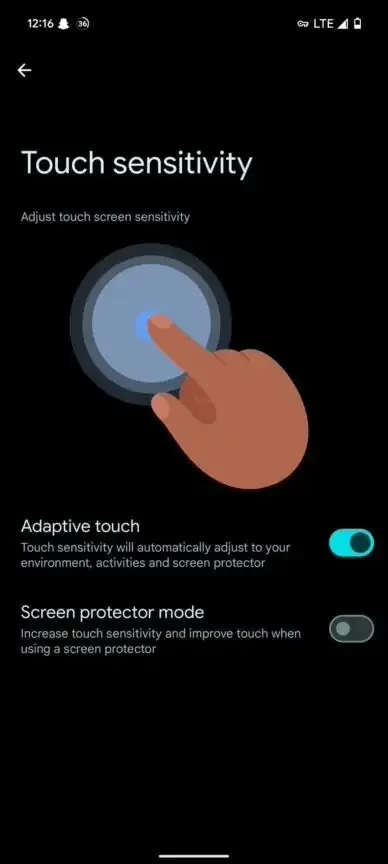The Google Pixel 9 series has arrived, and with it comes a slew of features that make it stand out from its predecessors. While many of these features were announced during its launch, some have only just come to light. One such feature is the adaptive touch. This smart function is a game-changer for those who often use their phones in varied environments.

What Is Adaptive Touch?
Adaptive touch is a new addition to the Pixel 9 series, found under the settings menu. To locate it, users can navigate to Settings > Display > Touch Sensitivity. Once there, they will find the option to enable or disable this feature.
When active, adaptive touch allows the device to adjust its touch sensitivity depending on the user’s environment, activities, and even whether there is a screen protector. This is not just a minor tweak; it significantly improves the phone’s ability to recognize touch inputs under different conditions.
Improved Performance with Wet Fingers
One of the major pros of adaptive touch is how it boosts touch recognition when your fingers are wet. Many users have experienced frustration when trying to interact with their phones after washing hands or being out in the rain. Wet fingers can cause erratic behavior on most touchscreens, leading to missed inputs or random actions.
According to a comparison by Android Authority, the Pixel 9 series with adaptive touch enabled performs far better in these conditions than its predecessor, the Pixel 8 Pro. Where the Pixel 8 Pro struggled with wet fingers, often leading to random jumps or slides on the screen, the Pixel 9 handles these inputs smoothly and with great accuracy.

Screen Protector Sensitivity
Another scenario where adaptive touch shines is when using a screen protector. While previous Pixel models, like the Pixel 8 allow users to increase touch sensitivity when it detects a screen protector, the Pixel 9 goes a step further. It does not just adjust for screen protectors; it can adapt its sensitivity based on a variety of factors.
Read Also: All Google Pixel 9 Phones Have UFS 3.1 Instead of UFS 4.0, But Is It A Big Deal?
This means that whether you’re using the phone with a screen protector or without, and regardless of the environment, the Pixel 9 is constantly fine-tuning its touch sensitivity to ensure the best possible user experience.
Conclusion
The adaptive touch feature is active by default on the Pixel 9, but users have the option to turn it off if they prefer. However, given the clear benefits it brings, especially in challenging conditions like wet fingers or screen protectors, most users will likely want to keep it on. The Pixel 9’s adaptive touch is a small yet significant improvement that sets it apart from its predecessors. It’s a feature that many users will appreciate, making their interactions with the phone smoother and more reliable, no matter the conditions.
Disclaimer of Gizchina: We may be compensated by some of the companies whose products we talk about, but our articles and reviews are always our honest opinions. For more details, you can check out our editorial guidelines and learn about how we use affiliate links.
Source from Gizchina
Disclaimer: The information set forth above is provided by gizchina.com independently of Alibaba.com. Alibaba.com makes no representation and warranties as to the quality and reliability of the seller and products. Alibaba.com expressly disclaims any liability for breaches pertaining to the copyright of content.



